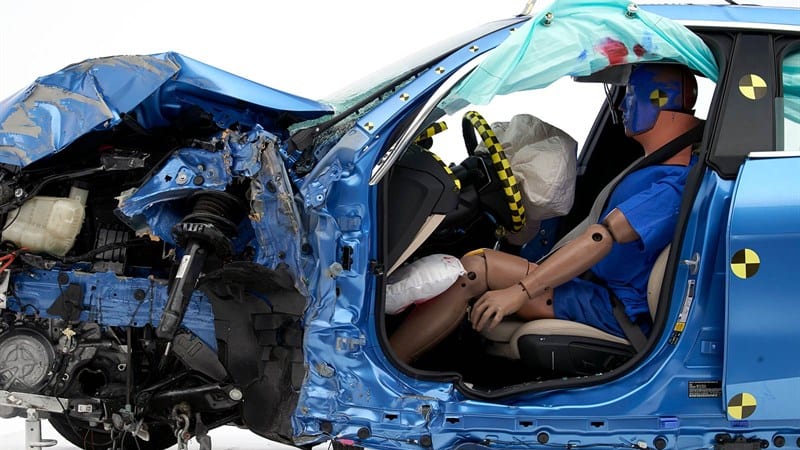
We’ve known for a while that women are at greater risk of injury in car crashes than men. A new Insurance Institute for Highway Safety study sheds more light on why that may be the case, and one factor is vehicle size. Women tend to drive smaller cars, and men tend to drive larger ones.
The IIHS analyzed data from police-reported accidents in 1998-2015, and found some revealing statistics. Women were three times as likely to suffer moderate injury, described as a concussion or broken bone, in a frontal collision than men. They were also twice as likely as men to sustain serious injuries, for example a collapsed lung or traumatic brain injury.
The IIHS determined that one explanation for these findings was the fact that, in these accident reports, 70 percent of the women were in passenger cars. while only 60 percent of men were. On the flip side, 20 percent of men were in pickups, compared to only 5 percent of women. Minivans and SUVs had a 50/50 split between men and women. Unfortunately, we couldn’t find any distinction made between unibody and ladder-frame SUVs.
In addition, men tended to be in the striking vehicle, while women were more likely to be in the vehicle that was struck. Larger vehicles strike with more force, due to their greater mass, than smaller vehicles.
Even when the IIHS took vehicle size out of the equation by studying crashes involving men and women in similar-size vehicles, the report says “women were still twice as likely to be moderately injured and a bit more likely to be seriously hurt.” In particular, women are 2.5 times more likely to suffer moderate leg injuries.
The good news is that both men and women have seen benefits from improved safety regulations and testing with female-sized dummies in recent years. Until 2011, all crash test dummies were designed after males.
Factors not mentioned in the IIHS study may include the fact that most cars are designed around an average male body. According to the National Bureau of Standards, the typical American male is 5-foot-9, while an average American woman is 5-foot-4. Because of this, women have been traditionally forced to sit closer to the steering wheel and dash, increasing the chance for leg and chest injuries.
Those injuries can come not just from the crash, but from deployment of the airbag if the driver is sitting too close. A minimum distance of at least 10 inches between chest and the airbag cover on the steering wheel is necessary to avoid airbag injuries and allow the devices to work as intended.
The IIHS states that more men die from crashes than women overall. However, when the data are adjusted for speed and looked at on a death-per-crash basis, women are still 20% to 28% more likely be killed and 37% to 73% percent more likely to be seriously injured.
Related video:
